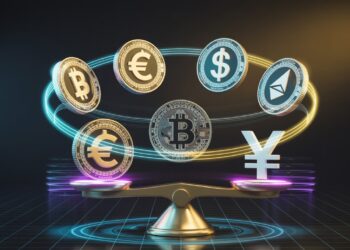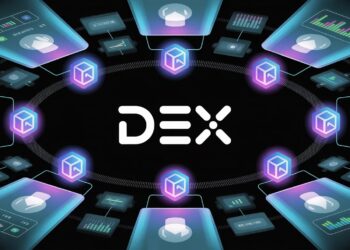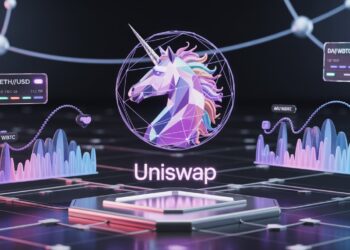Imagine this: a hacker breaks into a company’s system and steals millions of customer records. Names, addresses, credit card numbers – everything is exposed. It’s a nightmare, right? That’s why data tokenization is so important. It’s a way to protect sensitive information by replacing it with meaningless, non-sensitive substitutes called tokens. In today’s world, where data breaches are common and privacy is a top concern, understanding data tokenization is vital. Let’s find out how it works and why you need it.
Understanding Data Tokenization
This section will cover the core concepts of data tokenization. Let’s get started.
What is Data Tokenization?
Data tokenization is like giving your valuable stuff a secret code. You take sensitive data, such as credit card numbers or social security numbers, and swap them out with random, harmless-looking data called tokens. These tokens look like real data, but they are useless to hackers because they don’t represent the actual information. It’s a mathematical process, really. Algorithms generate unique tokens for each piece of sensitive data. The original data is stored securely in a separate location, away from the tokenized data.
Tokenization is different from other security methods. For example, it doesn’t scramble the original data like encryption does. It replaces it completely.
Key Components of Tokenization
A data tokenization system has several important parts. Think of it like a well-guarded fortress.
- Token Vault: This is a super-secure storage where the relationship between the tokens and the real data is kept. Access is tightly controlled.
- Tokenization Engine: This is the technology that creates the tokens and turns them back into real data when needed. It’s the workhorse of the system.
- Security Policies: These are the rules that say who can create tokens, who can use them, and who can access the real data. It’s like the guard’s rulebook.
Types of Tokenization
There are various ways to tokenize data, each with unique strengths. Here are two main types.
- Algorithmic Tokenization: This method uses math formulas to make tokens. It’s predictable if you know the algorithm, so it needs to be done carefully.
- Vault Tokenization: This type uses a secure vault to store the link between tokens and real data. It’s more secure because the link is hidden.
Benefits of Data Tokenization
Data tokenization offers many advantages, making it a crucial tool for modern businesses. It helps keep your data safe.
Enhanced Data Security
Tokenization greatly lowers the risk of data breaches and unauthorized access. It protects data from theft.
- Sensitive data is replaced with tokens, creating a smaller target for attacks.
- Even if hackers steal tokens, they can’t use them because they don’t have the real data.
Regulatory Compliance
Tokenization helps organizations meet strict rules and avoid penalties. It’s all about compliance.
- PCI DSS: Tokenization helps meet Payment Card Industry Data Security Standard (PCI DSS) rules, which are vital for businesses that handle credit card data.
- GDPR: It aids compliance with the General Data Protection Regulation (GDPR) by protecting personal data.
- HIPAA: Tokenization helps meet the Health Insurance Portability and Accountability Act (HIPAA) rules by securing patient health information.
Cost Reduction
Tokenization can lead to significant cost savings for companies. Lower costs is a win!
- Reduced Scope of Compliance: Tokenization shrinks the number of systems needing strict security measures.
- Lower Insurance Premiums: With strong data security, insurance companies may offer lower rates.
Data Tokenization vs. Other Security Methods
Tokenization is one of many data security tools. Let’s compare it with others.
Tokenization vs. Encryption
Tokenization and encryption both protect data, but they do it differently. How are they different?
- Encryption scrambles data so it’s unreadable, but it can be reversed with the right key. Tokenization replaces data with a meaningless substitute.
- Encryption can be slow because it requires a lot of computing power. Tokenization is generally faster.
Tokenization vs. Masking
Tokenization and masking are used for different purposes. Here’s what sets them apart.
- Masking hides parts of data, often for display purposes. Tokenization replaces it entirely for security.
- Masking isn’t suitable for production environments because the original data is still present. Tokenization is designed for live systems.
Tokenization vs. Anonymization
Tokenization and anonymization both protect data, but in unique ways. It’s about how they handle the data.
- Anonymization removes all identifying information from data. Tokenization lets you revert to the original data if you need to.
- Anonymization is good for research where you don’t need to identify individuals. Tokenization is suited for ongoing processes where you might need the original data later.
Implementing Data Tokenization
Ready to put data tokenization into practice? Here’s a step-by-step guide.
Identifying Sensitive Data
First, you need to know what data to protect. This is the starting point.
- Use data discovery and classification to find sensitive information.
- Determine which data elements are most critical to protect. Social security? Credit cards? Names?
Choosing a Tokenization Solution
Picking the right tokenization solution is key. Think about these factors.
- Consider on-premise vs. cloud-based solutions. Which one fits your needs?
- Make sure the solution works with your existing systems. Integration is important.
Best Practices for Tokenization
Follow these tips for effective and secure tokenization. Follow these practices.
- Regularly check and monitor tokenization processes. Keep an eye on things.
- Use strong access controls and authentication. Only authorized people should access the data.
Real-World Examples of Data Tokenization
See how different industries are using data tokenization to stay secure. Real examples are useful.
E-commerce
E-commerce companies use tokenization to protect customer payment information. Credit cards are safer.
- They securely process credit card payments without storing sensitive cardholder data.
Healthcare
Healthcare organizations use tokenization to protect patient data. Privacy is important.
- They protect patient data while still using it for research and analysis.
Finance
Finance companies use tokenization to secure transactions and customer data. Security is key.
- They secure financial transactions and customer data while following strict rules.
Conclusion
Data tokenization is a powerful method for protecting sensitive information by replacing it with non-sensitive tokens. It enhances data security, helps with regulatory compliance, and can lower costs. In today’s world, where data breaches are all too common, understanding and implementing data tokenization is more important than ever. Explore data tokenization solutions today and safeguard your organization’s future.

























